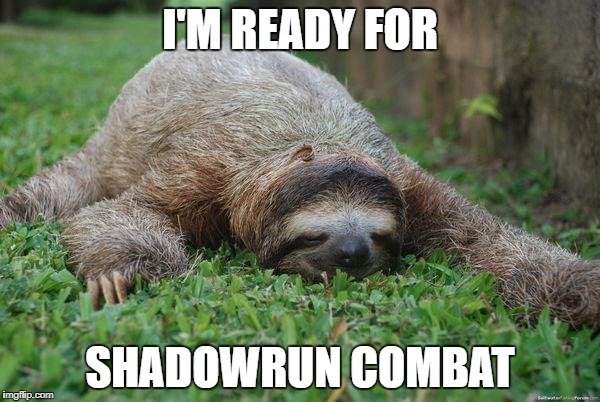Shadowrun Pain Points
Now that we've already discussed some of the things I love about Shadowrun, it's time to talk about some things I really dislike.

The writing... Oh the writing! I hate the writing in these books so bad. I make a conscious effort not to read a single piece of fiction published in any of the source books because they are just cliche filled drivel. If you want to know how to take a great setting and atmosphere and turn it into complete garbage, spend some time on the short stories and character descriptions in Shadowrun books. I am so so sorry to any writers for these books that might read this, but seriously guys... stop phoning it in. If you can't get through a single short story (like seriously... 2 pages) without counting on at least 3 tropes, you're not doing a good job.

This might fall under writing, but it takes a different dimension here, so I'm including it as its own thing. Premade content is unbearably bad. I'm not talking about just the aforementioned short story/fiction elements here. A lot of the campaign books have some pretty kickass story ideas, but the layout is damned near unusable. Maybe I'm just used to the old TSR modules from AD&D where you could pretty much pick up the booklet and run the adventure with no prep at all. Maybe that's a high bar, but come on... the organization of these books is such a pain.
What I expect:
- Reasonably sized maps on a grid to scale
- Clear notation about important information players need to obtain as part of the research phase of a mission
- Appropriate rolls and thresholds for relevant skill checks for a required task
- Proper statblocks and/or full sized character sheets in the back that include condition monitors
- Coherent story that links one mission to the next to create a complete story arc
What I often see instead:
- Tiny maps when they even exist, with no grid for scale
- Inconsistent drivel that assumes players will only get information from their fixer
- Often no real guidance in source material for relevant skill rolls or their difficulties
- Compressed statblocks that have no room for notes
- A series of tenuously linked (at best) missions that form less of a story or actual campaign than just a loosely knitted set of one-shots.

This game has probably THE slowest combat system.
- Roll for attack
- Defender rolls dodge
- Defender rolls soak
- Resolve damage
That's if you're not casting spells or doing anything fancy. It takes players a while to get into the rhythm of Shadowrun combat and the 40+ dice involved in the 4 steps above. It gets so bad that many campaigns simply avoid combat entirely. My campaigns try to use combat for dramatic effect, but it's super easy to just (woops!) kill off a player character, because you wanted to make sure s/he feels some fear. Large fight scenes that involve more than 4 players and an equal or greater number of antagonists really require a full game session in many circumstances, especially when players are first starting out.

The last one on my list is character generation. I would never have gotten so into this game if it wasn't for Chummer. Character generation is not a simple feat, nor is figuring out how much karma basic character upgrades cost. Chummer is amazing for this and so much more. It's a community created tool for character generation and career progression. With hooks for PDF readers that allow you to connect your books directly to the tool, you can look up any skill, attribute, spell, or piece of equipment simply by finding it in the list and clicking the page number. GENIUS! Character generation is really hard for new players and Chummer takes a lot of the pain out of it.
I hope you're enjoying this series. If so, upvote, follow, re-steem as you please. My next in this series will be an introduction to the protagonists of my current campaign titled, "Toronto Troubles".